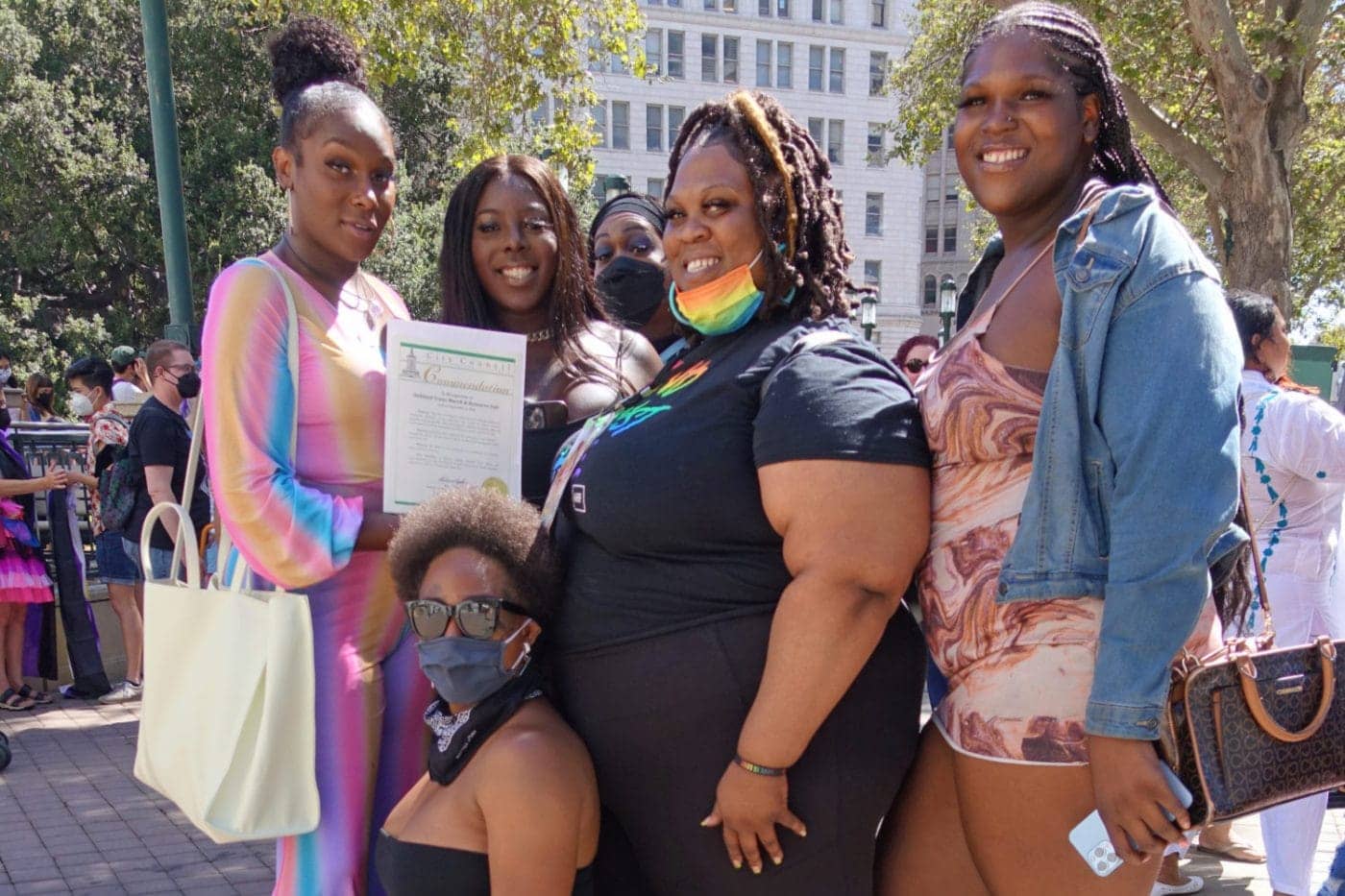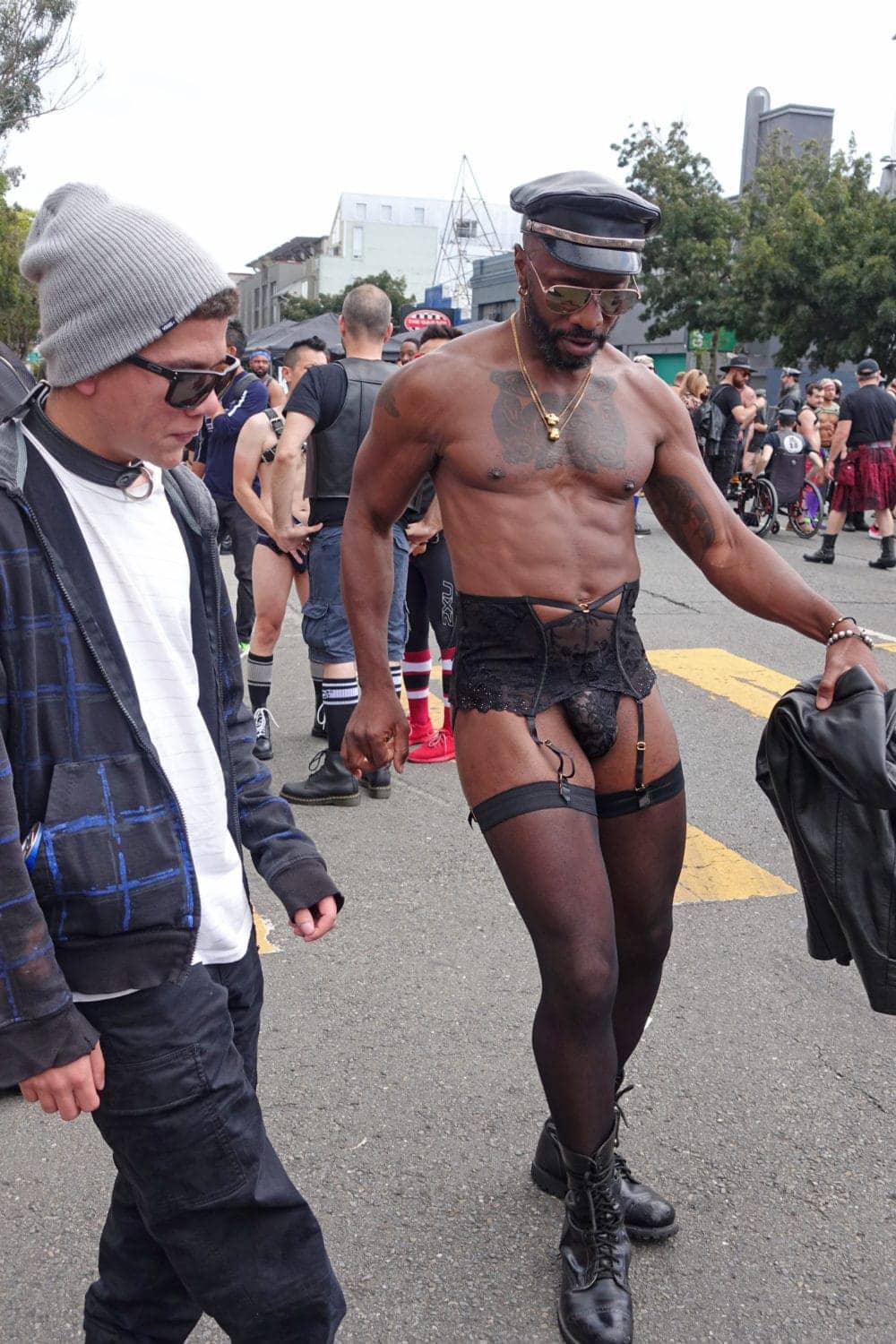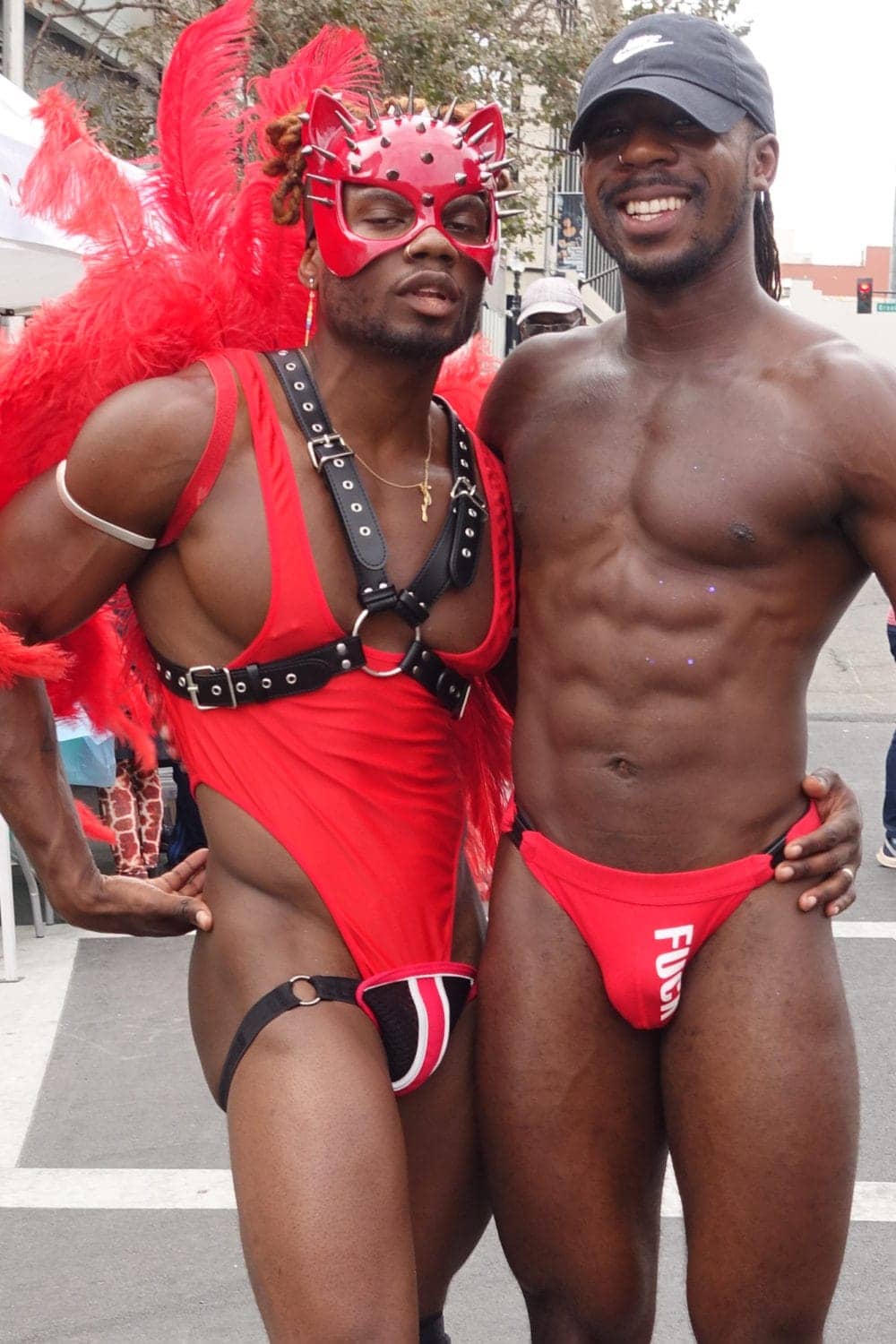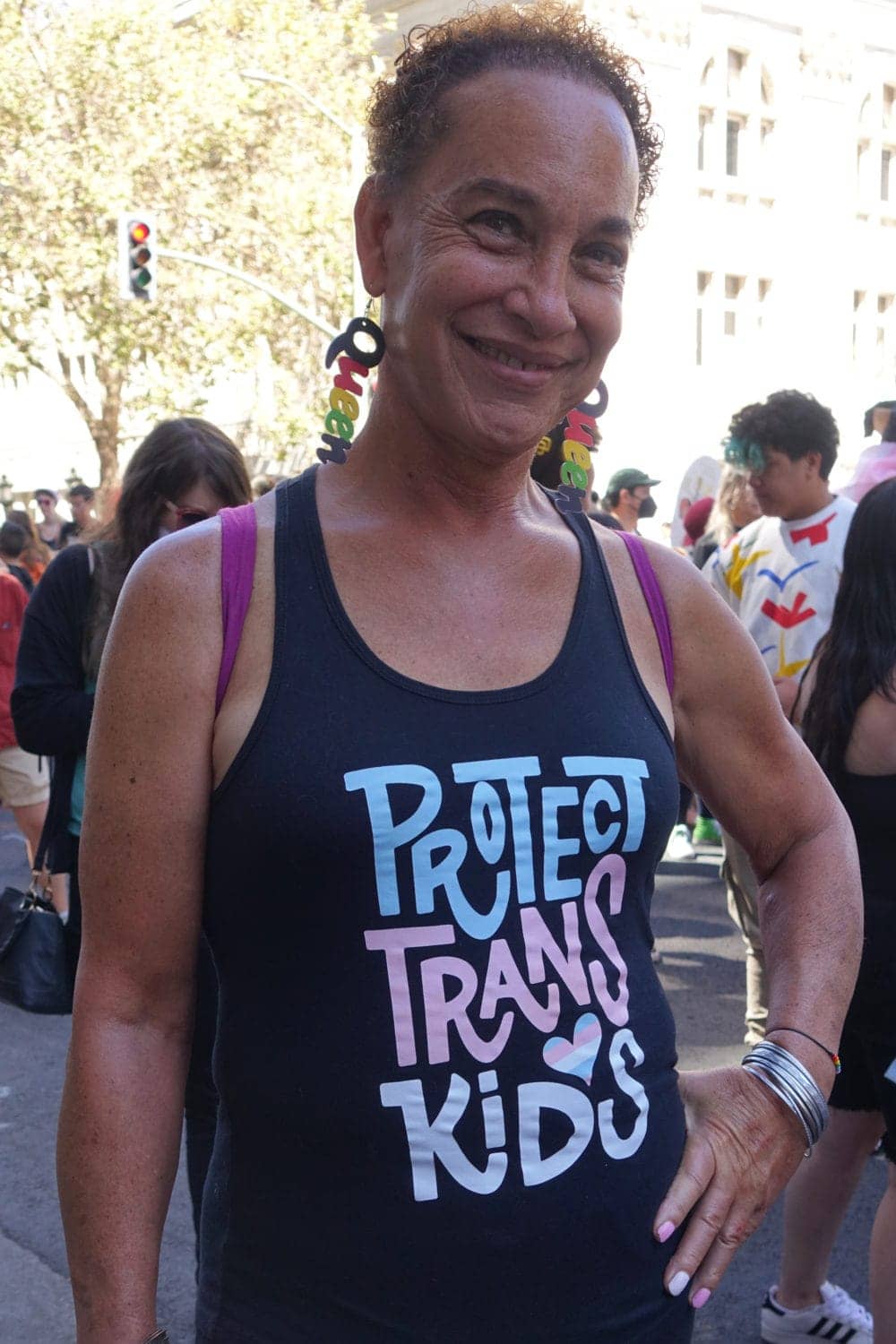
by Sumiko Saulson, photos by Biron
“Freedom is not something that anybody can be given. Freedom is something people take, and people are as free as they want to be.” – James Baldwin
For people who live at the intersection of Blackness and queerness, James Baldwin’s words have a special poignance. After all, it was a Black transwoman, Marsha P. Johnson, who threw the first brick – or by some accounts, her shoe – and that act started the Stonewall Riots, on the anniversary of which we celebrate Gay Pride. I like to think about that shoe sometimes.
You might look at her elegant floral headdress and her long, flowing gowns, and assume it was a tasteful high heel, but I’ve seen many images of her marching with Latina transgender queer activist Sylvia Rivera. Usually, it’s Sylvia wearing the heels. Marsha most often had on some well-worn athletic shoes, which I suppose made all of that marching she did a lot easier.
Black and Brown transwomen like Marsha and Sylvia, and gay Black men like James Baldwin, are of paramount importance, not only to young African American members of the LGBTQ community but to the entire alphabet mafia. Not only the 1969 Stonewall Riots in New York, but the Compton Cafeteria Riots, which took place three years earlier right here in San Francisco’s Tenderloin neighborhood in 1966, were spearheaded by Black and Brown people.
Gay photographer Biron noticed these patterns of erasure with specific regard to Black gay men.
Yet, we tend to be erased from the narrative. Take, for example, the whitewashed 2015 Stonewall movie. And lots of love to Harvey Milk, but there are no Milk-level biopics with Sean Penn-level stars about Marsha.
On the other side of the equation, queer Black historical figures are often straight-washed.
James Baldwin was a very openly gay man, yet when I tried to search for a quote by him about being gay, it got lost amongst the many quote articles written by and for straight people. Likewise, Angela Davis is an out and proud lesbian, but political conversations about her importance to be Black community tend to omit this important fact. Portrayals of Billie Holiday that include her well-known bisexuality are usually the same ones that heavily focus on her drug addiction, feeding into tropes about criminal sapphic Black women.
Gay photographer Biron noticed these patterns of erasure with specific regard to Black gay men and decided to do something about it. He made it his mission to make them more visible by taking lots and lots of photographs of the many Black men he saw at public events such as Folsom Street Fair, Gay Pride and more who were often left out of images created by other photographers.

“My focus for the past 30 years has been multicultural male images both gay and straight. I soon discovered that Black and Asian models were often discriminated against both within and outside the LGBTQ community in the SF Bay Area. It’s also the reason I devoted so much of my photography to Bay Area B-Boys (breakdancers) mostly from Black Oakland who performed at Powell and Market Street and Fisherman’s Wharf that were hassled by the police and not appreciated for their hard work and talent,” said Biron.
Over the years, his photography has also come to include Black transwomen, and black people in general at events for the LGBTQ community. Because people normalize what they see every day, his mission is important to those who have intersectional identities within the Black and queer communities.
Visibility is a matter of life or death for Black LGBTQ people
Laverne Cox said: “When I was perceived as a Black man, I became a threat to public safety. When I was dressed as myself, it was my safety that was threatened.”
Things have not changed that much since Marsha P. Johnson, and as the famous Black transgender actress Laverne Cox stated, Black transwomen are constantly endangered by the general public for nothing more than existing. Crimes such as street violence and domestic violence are constantly committed upon their person. Black transpeople in general are at a much higher risk for homelessness, including transgender Black youth.

As her quote also illustrates, Black men, including Black transmen – as the 2020 law enforcement murder of Tony McDade showed us – or even Black people who are perceived to be men by the white cisheteronormative overculture, are in constant danger from law enforcement and those in authority for the crime of existing.
Visibilty is vital to the survival of those of us who live on the intersection of Black and queer. The huge racial disparities in testing, awareness and vaccination rates for monkeypox virus is just the latest example of how the failure to understand public health intersectionally harms Black members of the LGBTQ community. Every year, Black transwomen make up the vast majority of transpeople who die as a result of anti-trans hate crimes. And, there are racial disparities in the rates of homelessness for LGBTQ youth.
For many, this brings back reminders of the start of the HIV pandemic. Once again, the African American community is more heavily affected. Black and Brown people have more cases of monkeypox and less access to vaccines, as well as a lack of information about the disease and the vaccine being spread within our communities. It doesn’t help that the name monkeypox is racially stigmatizing, because the term “monkey” has long been a racial slur against African Americans and others in the African Diaspora.
Visibility helps normalize our existence
As out, gay and Black author and theater critic Hilton Als pointed out in his 2015 New Yorker article, “The Elusive Langston Hughes,” Isaac Julien’s short film “Looking for Langston” was driven in some sense by the need to claim Langston in the face of a dearth of “out” ancestors. Als describes James Baldwin’s frustration with Langston’s secretiveness. As the generations of out Black LGBTQ community members increase, more and more Black queer youth are able to grow up in a world where they are aware of people like themselves. But we still have a long way to go.

Kevin Leo Yabut Nadal, Ph.D.’s 2021 Psychology Today piece, “Why Representation Matters and Why It’s Still Not Enough,” talks about how lack of representation can negatively impact the mental health of young people, citing studies that document a connection between positive representation and lowered rates of suicidality and improved mental health for Black and LGBTQ Youth.
Bestselling author Sumiko Saulson (they/them or ze/hir) writes award-winning multicultural sci-fi, fantasy, horror and Afrosurrealism. Their latest novel, “Happiness and Other Diseases,” is available on Mocha Memoirs Press. Winner of the 2021 Horror Writers Association Richard Laymon Presidents Award, 2017 Afrosurrealist Writer’s Award, 2016 HWA Scholarship from Hell, and 2016 BCC Voice Reframing the Other Award, their monthly series Writing While Black follows the struggles of Black writers in the literary arts and other segments of arts and entertainment. Support them on Patreon and follow them on Twitter and Facebook.





